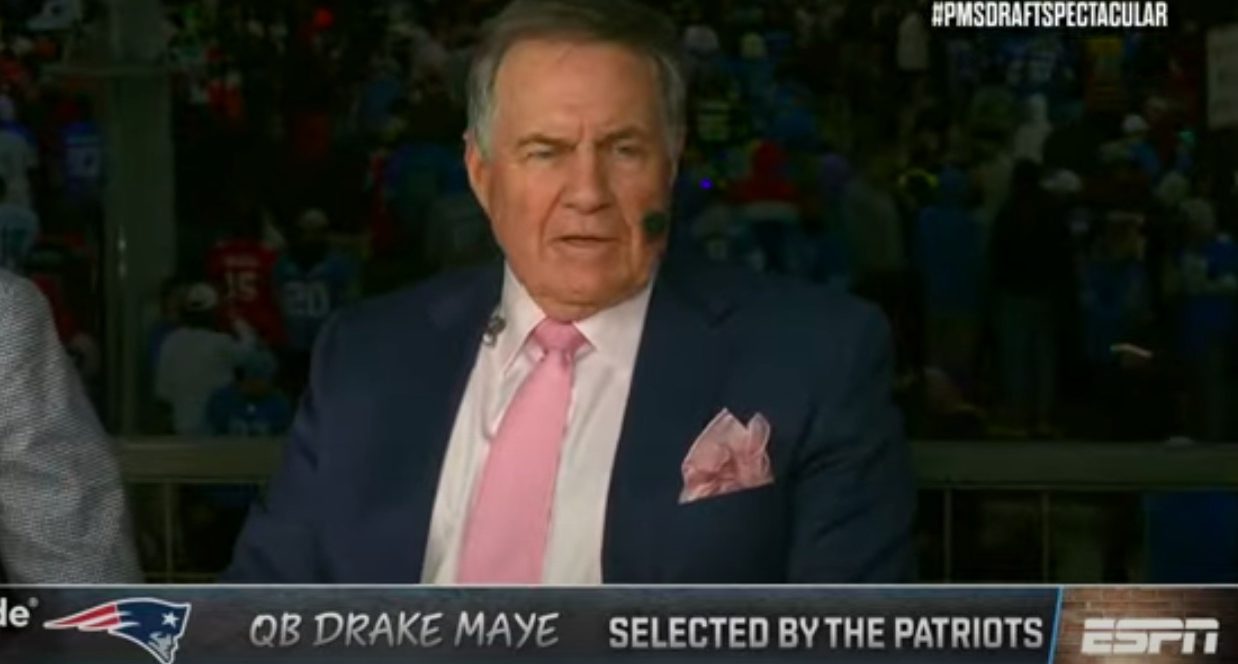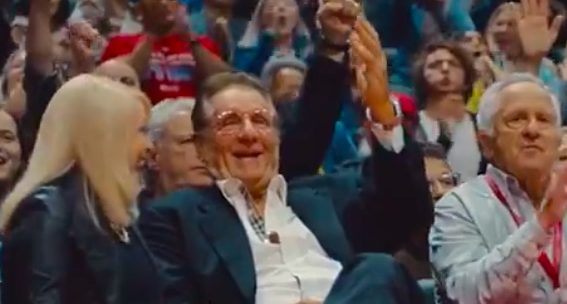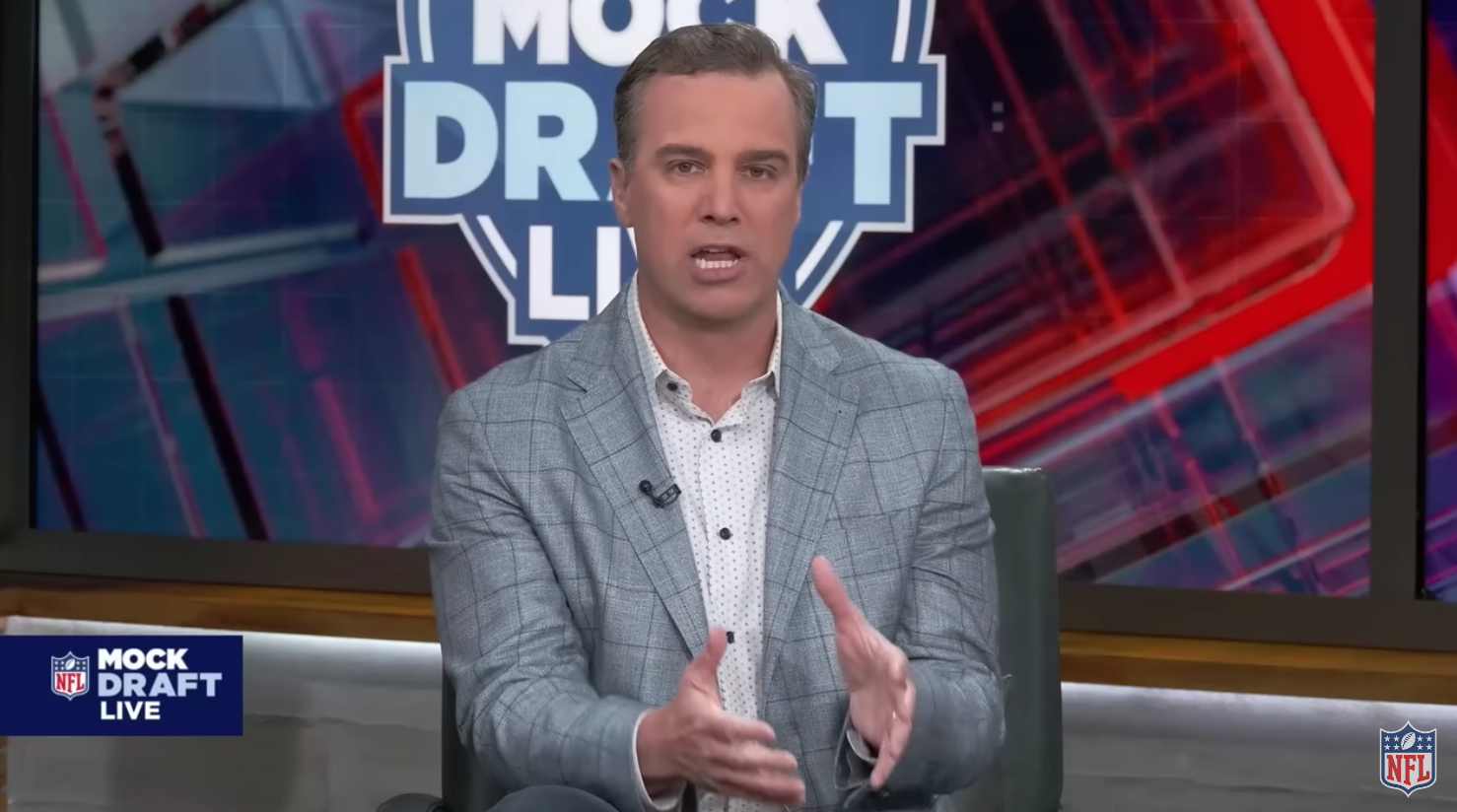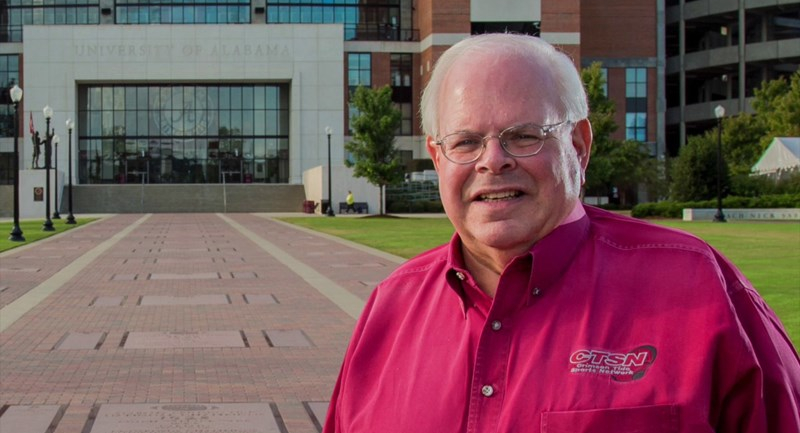In a sports media landscape teeming full of streaming options, it takes a perfect storm of timing, marketing and sheer luck for a documentary to capture some part of the cultural zeitgeist. Moreover, it’s getting harder and harder to resonate beyond the premiere date, even if a film is distributed by the biggest players in the space such as ESPN or Netflix. Unless it’s a live event that’s enveloped by hot take commentary shows that can carry the conversation for days on end, the audiences are splintered in ways that are still yet to be confidently measured within the media industry.
So when the Sinclair Broadcast Group premiered its newest documentary special, RIVALS: Ohio State vs. Michigan, prior to Thanksgiving, it stood as a test for its still-nascent sports media division in more ways than one. It was the first program to use the full scope of its unique structure across almost the entire United States – its 19 owned-and-operated regional sports networks of Bally Sports, seven affiliate RSN deals, digital channel Stadium, and the Tennis Channel, its linear cable network. And while RIVALS is already unique in terms of content – as reviewed by Michael Grant – it’s also a standout because it’s the first non-tennis show made by TC Studios, the in-studio production house of the Tennis Channel.
With an audience primed for another highly anticipated version of The Game between Ohio State and Michigan, Awful Announcing had the opportunity to speak with Ken Solomon, president of the Tennis Channel, about what RIVALS means for his network, its burgeoning production unit, and Sinclair as a whole.
This interview has been edited and condensed for clarity.
AA: Of the many possible stories out there, why was this rivalry picked for the first production from TC Studios?
Ken Solomon: The reason we picked this story was that it was actually a test for ourselves. If you get talented producers, and production team, and an unlimited budget, which no one has, you can make a great sports documentary because you get to pick the story. But nobody has an unlimited budget to do these things for nothing and it takes blood, and lives, and tears to get them done. Our point of view was, if we are going to endeavor into this; to try to have an impact in a way that is not happening right now as we get more and more fractionalized with our viewership and less big shots, we wanted to pick the most well-known rivalry – certainly one of the most important and renowned, and one of the most often told stories of a rivalry – and show that we could do it differently. If we could bring something familiar yet very different, that moves the needle on the way people think about rivalries and the way people think about this rivalry. So if we could do it with the most well-known one, then we certainly know we could do it with stories that are less often told.
AA: What is it about the brand of the Tennis Channel that made Sinclair believe it was the place to have an in-house production studio for long-form projects?
Solomon: Right, good question. And it’s not to say that we are the only ones within the company, but we are doing it for a couple of reasons. On this particular story and where it came from, it was actually born out of the last one we did which was called “Strokes of Genius.” That was Rafael Nadal/Roger Federer, and it was really our initial look at rivalry. Different tone and approach. Pretty ground-breaking. Got a couple Emmy nominations and worked really hard on it. (Talk about people that are hard to corral, even though we know them well, pulling that off was no small feat because it was Wimbledon. You think the Wolverines and Buckeyes organizations are tough to penetrate?) The point is that the story was centered on the 2008 Federer-Nadal Wimbledon final that was called the greatest match of all-time, as a jumping off point. We made this thing and said “while we were making it, it was about rivalry through the eyes of that rivalry. And who they are, and what it meant, and what it meant to other people.” We really wanted to explore that more deeply because rivalry is kind of the plutonium of sports that drives us.
But why us? It’s funny everyone thinks of everyone here as just tennis experts, but every executive here came from somewhere else. CBS Sports, Fox, ESPN, studios big and small, everyone here came from other backgrounds, usually other multi-sport backgrounds and came together to perfect how tennis was brought to the public. Second, storytelling, storytelling! Third, we already make this stuff. We’ve been making long-form documentaries in one shape or form for at least 20 years. Whether it is tennis on a regular basis or not, again, storytelling. We are the only national network within this massive media organization. And we are the only ones that do this, that makes long-form documentaries and docu-stories and stuff like that.
AA: What Sinclair is doing is reminiscent of what Fox Sports was in the late 90s and 2000s, where you had the national imprint and all these RSNs. (Note: Walt Disney Co. bought the RSNs from Fox in 2017 as part of its acquisition of 21st Century Fox, but the Justice Department forced Disney to sell them after the sale was completed. Sinclair and Byron Allen’s Entertainment Studios bought the RSNs in 2019 through their joint venture, Diamond Sports Group. The RSNs were rebranded as Bally Sports after the casino company purchased naming rights.)
Solomon: Yeah and that really leads to the business side of it. It was organic for the Tennis Channel team and TC Studios. We’re just producers of long-form content and series specials and documentaries and, of course, live sports. We are doing it 24/7/365. We actually have interesting muscles in doing that because it’s a 24/7 place where our team is in-house. We work with DLP Media Group out-of-house and find it best to be partners, but every single day of the year we are constantly producing films and entertainment content of some sorts around the globe.
AA: This is a LOT to put together, and that’s just internally on the business side. Securing the rights and access to talk to these people – former players and coaches, the schools, the Big Ten and its network, famous alums – had to be chaotic.
Solomon: Absolutely on both accounts. Creatively we’re obviously trying to do something different. It was wildly entertaining, not only to people that are hardcore sports fans, the game fans, but the test is creatively opening up the funnel. If you don’t know anything about this rivalry, you walk away totally being into it. Understanding what all the fuss is about all these years that you’ve heard about, but it just hasn’t been able to penetrate. The funny thing is it’s really not about this rivalry, but about rivalries, and using this particular one as an apocryphal example so that when you see the film you’ll understand in a very different way.
And then the question is, why? The why is a bigger picture idea for Sinclair to fill a need and create an opportunity for fans and the business that is sort of becoming increasingly rare, which is getting wide distribution and viewership and an awareness for major pieces of work in sports film like this. The majority of the things that would be in this category these days, or much of it, is being produced for and by the streamers. The issue is that the numbers are relatively small in terms of viewership and it’s not simultaneous viewership. (Sinclair is) packets of simultaneous viewership, a hybrid. On one hand if you do the network thing, you have literally one shot. It’s one play, it was on… how did we do? It’s over in a day. Here we felt that Sinclair, combined with a third-party partner that was strategic, could create exponentially larger scale viewership and awareness for the story itself and the idea.
AA: So how does this strategy look at Sinclair? Is RIVALS an opportunity to create a national program across these RSNs akin to what Behind the Glory was for Fox in the late 90s and early Aughts? What role does your Tennis Channel – as Sinclair’s only national sports cable channel – play in support of the RSNs?
Solomon: It is worth noting that we were the test for Sinclair to see if they could reach beyond the TV station business and everything that goes with the TV station business. It has worked fairly well. It’s been an amazing partnership and given Tennis Channel a life we would have never had. They were the great emancipator for us. So then, how about the RSNs?
The most obvious thing was you have a bunch of skyscrapers in the desert from a programming standpoint. Nothing personal, but that was the strategy that Fox took, which was “we are just gonna leverage the heck out of the live rights.” And that’s not a bad strategy for Fox, but it’s not maximizing the platform. The model these days is that a broadcast network will invest in major sports, and maybe break even or lose money because their whole business and distribution is driven by it. It makes it a must-have cable right? There’s no question there. They package inventory with it, ad sales inventory, their entire schedule. It becomes the guaranteed tentpole. It’s temporal hits. So they’ll go negative on that in order to drive the rest of the network. Here you have the RSNs on a market-by-market basis but add them all up and they are a national network including YES Network (NYC) and Marquee (Chicago), which we have. It’s the other way around. We’ve got the biggest ratings in every single local market. The highest rated shows of any sort are the local rights on the RSNs and nothing else of scale. I don’t want to take away from the morning shows and stuff we are building, but if you could put something good, game-adjacent as a lead-out or lead-in to these games on a regular basis if you add all that up on a national basis, that’s the biggest network in television.
AA: As you mentioned earlier, most sports documentaries are largely coming from the streamers or if they are coming from ESPN and the like, they’re made with populating the streamers in mind. So, what is the plan afterwards for RIVALS?
Solomon: Creatively, (RIVALS) hit the mark, we are very satisfied. We will continue to do things differently. The goal was if you saw this on any of these other platforms, you wouldn’t confuse it with something made by someone else. And that’s the beginning of a brand. In terms of distribution, we will definitely have direct-to-consumer distribution in the Sinclair universe. If this is going forward presumably, a longer-term streaming partner.
AA: It’s also interesting because you mentioned earlier with the skyscraper analogy for programming. Other broadcasters are trying to win the night or a couple of nights, whereas with RIVALS, you want to be steady for a few weeks and then continue to build upon there. Is that a fair assessment? Is that the absolute goal in terms of your viewership?
Solomon: 100%. It’s cumulative impressions over the course of the month generally. In a sense it’s more of a brand building exercise while building multiple skyscrapers hopefully, but in the case of the RSNs, we’re hopefully a very good-sized building standing next to a skyscraper. The beauty is there can be many events on a regional level, so you are adding up these regions and can say where is the optimal place in this market to have this air between RSNs, TV stations, national presences, and ultimately direct to the consumer. It doesn’t have to be one place.
AA: The Val-Pak sponsorship for RIVALS is really fascinating because in addition to digital marketing, you’re now dealing with print advertising – a product or service can become personally relevant if someone is grabbing something from the doctor’s office or a car dealership.
Solomon: It’s right there. And it’s sitting on the table for weeks at a time. It’s a real, tangible thing that is a breakthrough, and that’s our secret weapon. Stuff like that is just an example of creative ways to create and develop awareness on a national broad scale… the beauty is if you are going to do that, now people have multiple chances to act upon that as opposed to once. It’s good old-fashioned broad marketing.
This is a broadcast exercise. The thesis is that though it is sports, this is for everyone. You don’t have to know where the laces are on a football to be compelled by this, and that’s the goal. When you get a Val-Pak, you are talking about the broadest possible reach and you give people multiple chances to act upon that, as opposed to just one.
AA: You said it’s a broad campaign marketing-wise, but this seemingly old-school tactic aims to attract the older viewers who remember Woody Hayes, Bo Schembechler and their years of coaching in The Game. Baby Boomers (and the Silent Generation before them) aren’t as respected in terms of ratings, but you’re bringing them into the fold alongside the expected ways of attracting younger viewers. In some ways, is this going against the grain of TV execs in not trying to go younger, but casting a wide net with every age group?
Solomon: Yes, it is a combination – this will skew how it’s going to skew, but it’s just big. And big includes up and down the demographic scale. The good news is I can spend hours about the highly targeted social media stuff, so there’s no stone unturned. I think part of the magic of this is when you have this entire company pointing all of its efforts on every different level. It’s everybody. Who shouldn’t be interested if we do this right? If we can just tickle their fancy a little bit, even if they never watched one of these games. And then maybe they will watch some of these games.
AA: So, what’s next? If this is going to be the tentpole to start something special for Sinclair, what’s the next rivalry or rivalries that you are going to focus on for this series?
Solomon: Well, we have a long list. I can only tell you that when you start thinking about it, there are so many. We didn’t do it just to be a one-off necessarily, we wanted to prove (the concept). I think that’s going to be a matrix decision. Not sure exactly which rivalry but suffice to say it’s not limited to any sphere or even any part of the globe. We are going to really want to try to be special. It’s like a band – when you make the great album the last thing you want to do is [what] everyone wants you to do, which is make the same album but slightly different. We actually want to do what every great band does, is reinvent themselves and take it to the next level within who they are.
This particular one is going to resonate a little more here; people know OSU/Michigan around the world, but it’s not the same as the World Cup. What’s going to have the best impact? What’s going to have the best story next? I think we will get through this, take a breath, and then we will sit down and decide. The beauty is there is no limit and no end to it. We are not going to run out of rivalries – sports or otherwise.







